After Two Years of Delays, Apple's CarPlay Ultra Falls Short of Expectations
![]() 06/11 2025
06/11 2025
![]() 434
434
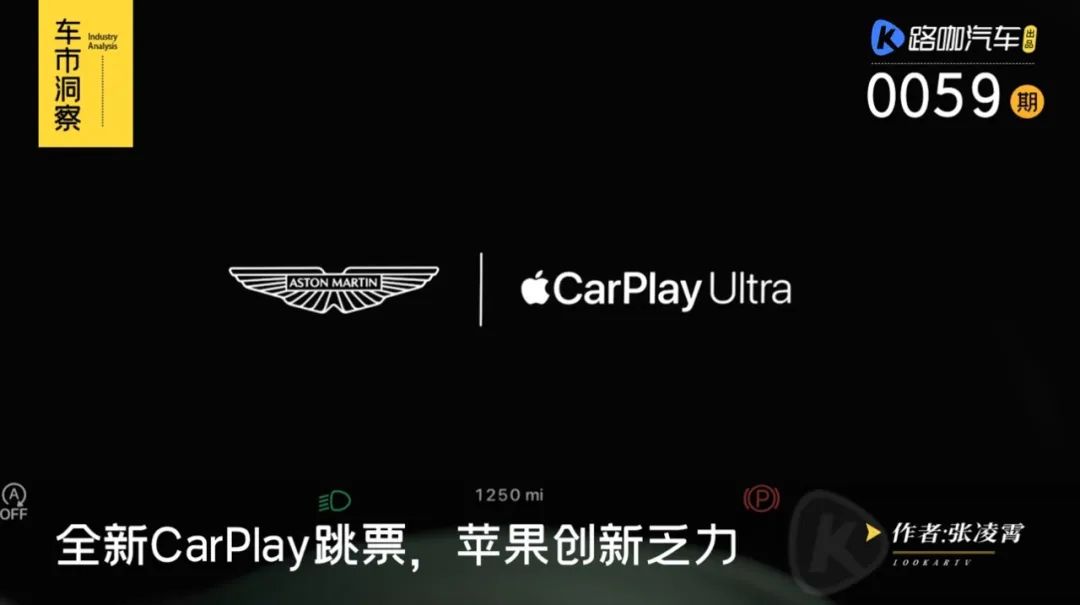
Apple's annual Worldwide Developers Conference (WWDC) 2025 kicked off with a novel naming strategy for its entire operating system lineup, appending the year "26" to the names, mirroring the automotive industry's naming conventions for new models.
At the conference, Apple unveiled a significant update to CarPlay, enabling users to access iPhone features more intelligently and safely while driving, such as answering calls while navigating maps.
Prior to June 9th, local time, Apple officially announced the launch of the new generation of CarPlay, initially available in Aston Martin models, with plans for global expansion in the future. This "new generation" is dubbed "CarPlay Ultra," deviating from the long-anticipated "CarPlay 2.0."
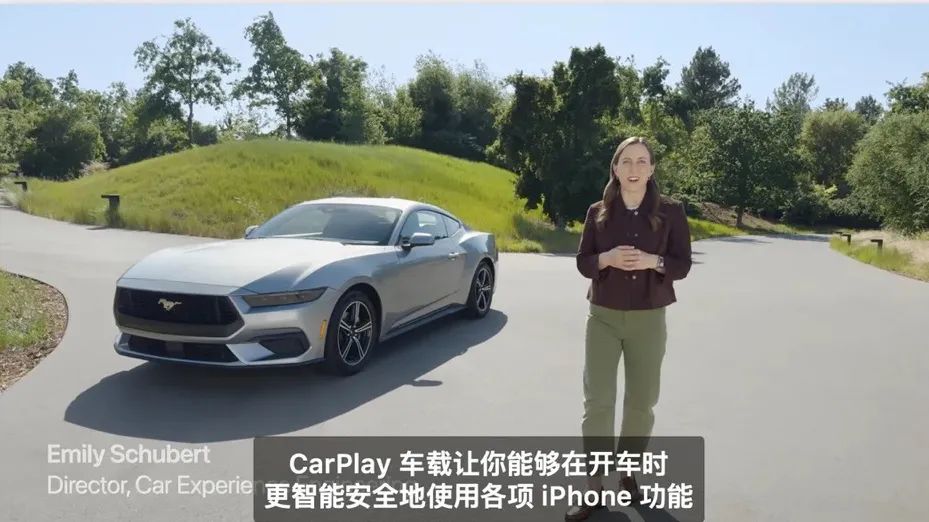
Moreover, CarPlay Ultra is not an iterative upgrade of the previous version; older car models cannot experience it through over-the-air (OTA) updates.
First introduced at WWDC 2022, CarPlay 2.0 promised to revolutionize in-car experiences by integrating fully with the vehicle's systems and controlling all screens. Apple dedicated an "unprecedented" three minutes to showcasing CarPlay 2.0, marking its most significant evolution in eight years, built upon the then-new iOS 16.
High hopes and expectations surrounded CarPlay 2.0. However, its debut on the Aston Martin DBX failed to elicit the anticipated excitement from users. The stunning Human-Machine Interface (HMI) design that captivated both insiders and outsiders during CarPlay 2.0's initial unveiling did not materialize as expected.
Over the past three years, CarPlay's positioning has oscillated between "dominating the in-car system" and "becoming a super app."
Why has CarPlay 2.0 consistently struggled to materialize?
Traditionally, CarPlay mirrored phone content onto the in-car system, integrating maps, music, and social media to cater to car owners' needs. Unlike Linux, Android, and other automotive operating systems, Apple CarPlay, Google Android Auto, Baidu CarLife+, Huawei Hicar, and similar services are more akin to super apps rather than true automotive OSs.
It wasn't until the unveiling of CarPlay 2.0 in 2022 that Apple focused on a new interface design and deep integration with in-car systems. Emily Schubert, Apple's Senior Manager of Automotive Experience Engineering, introduced at the time that the new CarPlay was deeply integrated with hardware, fundamentally transforming the way people interact with their vehicles.
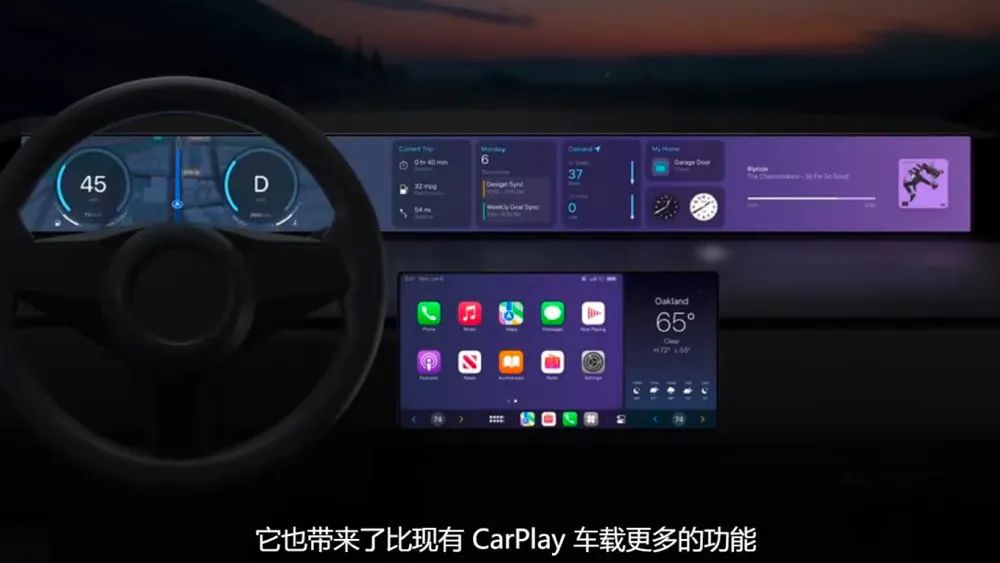
From the demonstrations at the 2022 conference, it was evident that Apple aimed for the entire smart cockpit. CarPlay not only took over the in-car screens but also displayed information such as vehicle speed, RPM, fuel level, and temperature on the instrument cluster. Users could directly control functions like air conditioning, the cockpit, and the radio through CarPlay.
Excitingly, Apple announced at the conference that CarPlay had partnered with numerous international automakers, including Mercedes-Benz, Audi, Porsche, Ford, Nissan, Hyundai, and Polestar. CarPlay 2.0 was expected to be available in vehicles later in 2023, piquing the audience's curiosity.
Experts point out that to achieve the "cool" effects showcased at the conference, CarPlay needed to surpass the level of ordinary applications and gain greater data access from automakers. This was, and remains, the most challenging aspect.
Gradually, news about CarPlay 2.0 faded. Subsequently, Apple removed the promotional text "Available in 2024" from its official website's feature page.
Only recently, with Aston Martin's release of a video featuring both the ASTON MARTIN and CarPlay Ultra logos, did new progress for CarPlay become apparent. The key advancement of CarPlay Ultra lies in its extended functionality to the driver's instrument cluster, in addition to the central infotainment screen.
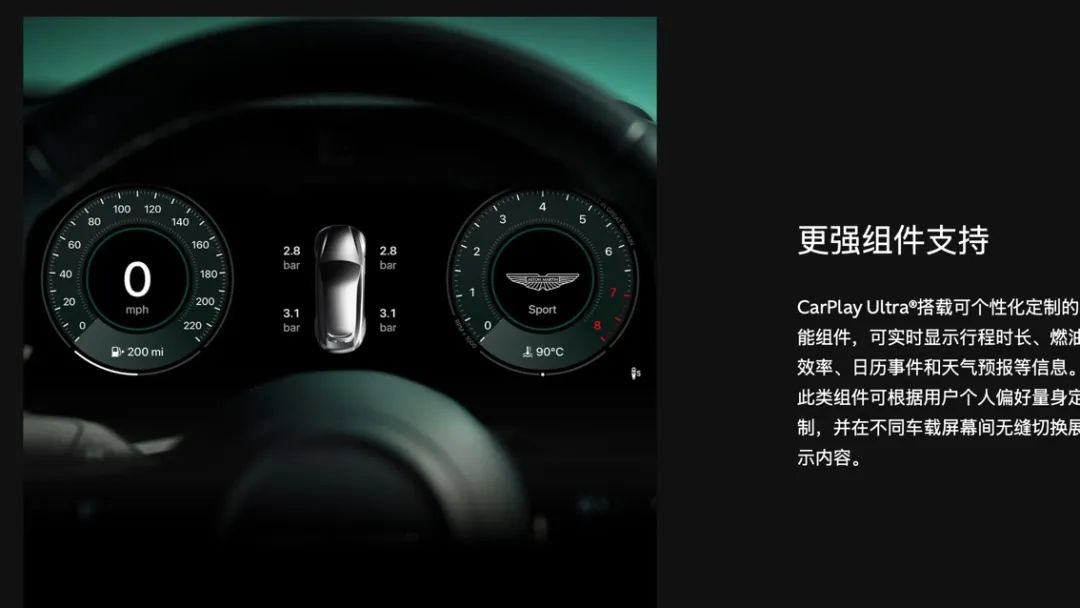
CarPlay can now display critical vehicle information such as speed, fuel level, water temperature, engine RPM, and even driving assistance systems. This necessitates automakers opening up all underlying interfaces to Apple. Automakers' insistence on maintaining control over core data access is one of the primary reasons for CarPlay 2.0's repeated delays.
From a Rigid Demand to Marginalization
The evolution of automotive smart cockpits involves the transition from traditional dashboards and center consoles to a domain controller architecture. CarPlay aimed to capitalize on this trend, aspiring to become a key player in the automotive industry's digital transformation. However, this is purely theoretical.
When CarPlay 2.0 debuted in 2022, Apple officially stated that 98% of cars sold in North America already supported CarPlay, and 79% of car buyers said they would only consider models with CarPlay. Essentially, regardless of automakers' stance, CarPlay had become a selling point for new cars among consumers.
Nonetheless, shortly after the conference, North American automakers like General Motors and Rivian publicly resisted CarPlay. General Motors announced that its new vehicles would run its proprietary in-car system, allowing car owners to download applications and use required functions directly within the system, mirroring domestic new-energy vehicle cockpit systems.
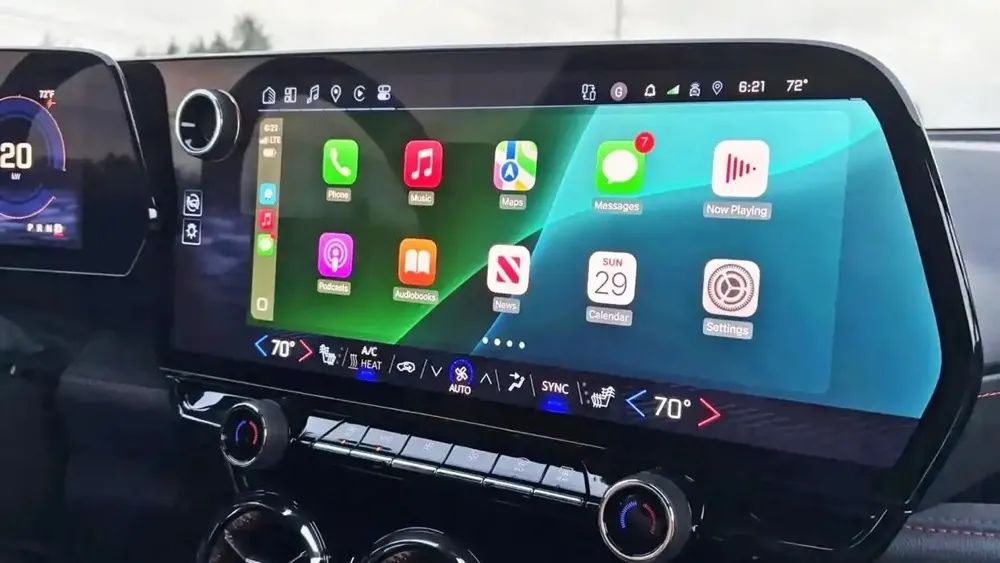
At that time, the global automotive market witnessed automakers, internet companies, and third-party application developers deploying smart cockpits centered around cockpit software applications. Automakers' in-depth development of proprietary cockpit systems based on foundational operating systems had become a trend. Customized independent operating systems like Tesla Version, Huawei HarmonyOS, and Xiaomi PengpaiOS posed even greater development challenges.
While the penetration rate of CarPlay in the United States is unclear, one thing is certain: to upgrade from a super app to an automotive OS, Apple needs to be involved in the early stages of new vehicle development. Three years have passed, and only a handful of automakers have officially announced joint development of smart cockpits with Apple.
For a long time, Apple CarPlay was a rigid demand for users, outpacing competitors like CarLife, primarily due to Apple's superiority in chips, OS, and application ecosystems compared to automotive companies.
In these three years, Huawei and Xiaomi, having entered the automotive field, have already validated for Apple that without automotive hardware as a foundation, in-car systems can only be theoretical constructs. Asking automakers to open up their most fundamental communication protocols to third parties is akin to seizing their "soul."

Huawei's ability to promote its "all-in-one" (HarmonyOS cockpit, Kunlun intelligent driving) solution beyond HarmonyOS Intelligent Drive is largely attributed to its brand's influence on user perceptions, in addition to the product experience. The success of HarmonyOS Intelligent Drive already underscores this point. Whether Apple possesses such influence in the automotive field has yet to be fully proven.
Besides Huawei and Xiaomi, new automotive players have established their self-developed cockpits as unique competitive advantages, such as Xiaopeng's DimensityOS and Li Auto's Li Xiang Tong Xue.
With the continuous integration of smart cockpit and autonomous driving domains, the evolution of in-vehicle operating systems will progress from smart cockpit OS to autonomous driving OS and ultimately to full-vehicle OS. Automakers' desire for independent control over in-vehicle operating systems is growing stronger. In layman's terms, in the automotive industry, Huawei and Xiaomi have almost secured their victories in advance. Apple, which has hesitated to fully commit to the automotive field, is becoming a less frequent player.







